Seeing Ghosts: Interpreting and Misinterpreting The Shining Part 2
by
Owen Hammer
The Shining has been the subject of so much convoluted conjecture that it’s quickly becoming better known for that than for being a great film in its own right. It’s the only movie to spawn another movie—Room 237—that is nothing but a record of bizarre “fan theories,” and, if you look at YouTube, you’ll quickly find that there is material for multiple sequels. Ironically, the progenitors of claims that Kubrick was hiding microscopic clues throughout the movie like a villain from Batman seem to have succumbed to the same spiraling insanity that Jack Torrance did (minus the ax).
Three “theories” that stick out are:
Jack was sexually assaulting Danny and there are subtle clues hidden throughout the movie, specifically in bear imagery.
The images in The Gold Room are designed to make the argument that the US should return to the gold standard.
Stanley Kubrick was instrumental in faking the moon landing and The Shining is his secret confession.
Presumably, I don’t need to argue that Stanley Kubrick didn’t fake the moon landing, and, while this is not a paper on economics, I will assume the reader understands why a return to the gold standard would be either impossible or the cause of a global economic catastrophe. As for the sexual abuse theory, pay attention to how this theory relies on the same “reasoning” that QAnon adherents use to argue for mass pedophilia networks operating in secret. It’s easy to imagine any of these people having a Jack Torrance-style descent into madness.
In this essay I will attempt to examine some of the common assertions about “clues” in the movie, and explain why they do not provide a means for better understanding The Shining. We all misinterpret movies, especially people like myself and presumably you who are thinking about cryptic films and trying to crack the code. However, when you are trying to bring something into the experience of a film rather than get something out of it, you are no longer appreciating it.
CONTINUITY ERRORS AND IMPOSSIBLE ARCHITECTURE
Many disappearing objects, changing objects, and moving objects are thought to be added to the film intentionally. Also, attempts to map out the Overlook Hotel all lead to the same conclusion—it’s impossible. The building is physically impossible. It’s assumed that these are all subtle tricks to make the audience disoriented and more fearful. Are they? I won’t make a list of the reality warping walls and doors here, but the “stars” seem to be:
The impossible window in Ullman’s office.
The doors that go into a part of a room with no corresponding door or would go nowhere based on the depth of the space they lead into.
The bathroom in the Gold Room curving so it would have to be in the bar.
The infamous Room 237.
Screenwriter John August calls this “The Genius Fallacy.” We assume that Kubrick is infallible so everything that appears to be a mistake to the great unwashed is actually intentional. August makes the case that concerns like lighting and composition would lead a filmmaker to create a set like this without regard for internal consistency. Having worked on many movies, directing, creating visual effects, doing continuity, working as a grip, and getting coffee for the crew, I am inclined to agree.
However, if you want a concrete example from a work that is almost the tonal opposite of The Shining—Seinfeld—Redditor PixelMagic has pointed out that the hallway would go into Jerry’s kitchen. I’m positive that the producers of Seinfeld weren’t trying to create a sense of existential dread.
My friend and fellow filmmaker Jeffrey Williams was interviewed for this essay and he summed it up perfectly: “Are we trying to make good TV or are we architecture students?”
Additionally, there are many continuity errors in The Shining that are presumed to be meaningful. The “stars” are:
Halloran opening a door that rehinges itself on the opposite wall after a cut.
The pattern of carpet on the second floor reversing itself.
The missing chair in the Colorado Room.
People who notice the magic door usually also notice that when Halloran, Wendy and Danny come out of the pantry, the background has changed. The two issues are related; this is one discontinuity, not two. Halloran opens the door when he’s on the south side of the hallway, but on the cut, the characters shift to the north side of the hallway. The set didn’t change; the actors changed position.
So, what might a director be trying to communicate with such a discontinuity. Well, we know that Kubrick was re-writing the script as he was shooting and that often times, scenes were re-shot. Perhaps Kubrick shot the entire scene with the three entering from the south (or north) door and then re-shot the entire scene with the three entering from the north (or south) door. Possibly, in editing, the performances from one day were good for the first half and performances for the second half were good on a different day. Cutting on the door opening, and hoping no one notices the door changing chirality, would be a preferable solution to cutting in a bad performance. I’m not saying that this happened, there are no production notes to use as reference, but it is as likely as Kubrick adding a purposeful discontinuity for effect.
The same logic goes for the carpet pattern changing. In the first shot, we only see the carpet, and no other part of the set, including the pot that should be in shot if this is supposed to be the same location. It looks like they needed to reshoot the ball rolling in after they broke down the set, so they just rolled out the carpet and shot it. No other part of the set is visible. There would have been a professional continuity supervisor on the shoot, but millions of viewers missed this discontinuity for decades, including those who saw it on early home video. It could be intentional, but it is so common for last minute reshoots to happen with the set no longer available and with a skeleton crew that it could easily be a mistake.
As for the disappearing chair, this is really strange. Given that the camera set-up doesn’t change, it would seem that someone removed the chair (or added it) between takes. So is it intentional? Well, if it is that means that A.) Kubrick just wanted to add a lot of random disappearances to add to the ghostly setting or B.) there is some special significance to this specific chair disappearing in this specific shot. A is more likely than B, and I will assume that’s the case until I or anyone else can come up with a more concrete explanation for the disappearing chair.
ABUSE, BEARS AND PLAYGIRL MAGAZINE
Another popular fan theory is that Jack has been sexually abusing Danny and Kubrick hints at this with coded images of bears and this theory overlaps with the theory that there are no ghosts in the Overlook and all the supernatural events are happening in the minds of unreliable narrators. These ideas are appealing because today we have a better idea of the reality of child abuse and the terrible fact that sexual molestation is more common than we had thought. Also, dismissing all the ghosts as imaginary simplifies the mystery of the movie, and gives us a sense that we have gotten closer to a solution.
This idea was apparently conceived of first in 2008 by Robert Ager. The theory goes something like this: When Danny is being treated by a doctor, his pants are off and his blanket or pillow has a friendly cartoon bear design on it, so Danny being sexually vulnerable is associated with bears. The man in an animal suit who appears to be having a sexual encounter is in an animal suit that could be a bear, so the association between sex and bears is confirmed. Additionally, there is a picture of two bears above Danny’s bed in the Overlook bedroom.
There’s more. When Jack is in the lobby of the Overlook, he is reading a magazine that sharp-eyed fans have discovered to be an issue of Playgirl with a cover story about incest.
If Kubrick wanted to say something about the sexual abuse of children, he would have done something much smarter and more easily accessible than this. The same people who praise Kubrick as an immaculate genius claim that he approached a difficult subject in the dumbest way imaginable.
But let’s say that Kubrick was playing games and putting all these weird things in his film. What did he accomplish? Adherents to these fan theories say that there is a “subconscious” or “subliminal” effect, but how do you prove that? We would have to leave film theory and go into the world of cognitive science. I’m happy assuming that the effect is so small as to be unnoticeable, meaning that Kubrick wasn’t doing anything intentionally, or he was, and he failed.
Also, the film was made before the internet, before VHS. Were viewers supposed to know that Jack was reading a Playgirl? I would say no, just because there would be no way to pause the film and zoom in. In fact, I would guess that the props department grabbed a Playgirl because, from a distance, it looked like a generic magazine. Maybe Nicholson and the crew were cracking up but no one else took it seriously. Nobody discovered the presence of the beefcake mag until the Blu-ray edition was released. This leads me to one of the most important rules of film analysis . . .
CONTEXT IS KING
Most fan theories fall apart when you put yourself in the mind of Stanley Kubrick circa 1978 when people watched a film once, maybe twice, and that was the audience for whom he was making The Shining.
For example, I’m the same age as Danny. A lot of the things he does (minus the supernatural stuff) seem so normal to me that Kubrick should be lauded for creating a realistic eight-year-old Gen-Xer, not for planting secret clues. Let’s take the Apollo 11 sweatshirt that Danny is wearing that is supposed to be conspicuous. Space travel was wildly popular in the seventies. The second two missions to the moon happened in the seventies. In the second grade, I brought in a recreation of the Apollo 11 lander made out of Legos. In the first grade, we mixed common household products to create a substance that had the texture and consistency of the lunar surface. They thought that we needed to know what the surface of the moon felt like in order to be functioning adults. Danny’s shirt is not remotely out of place.
There is Calumet Baking Powder because every house in America had Calumet Baking Powder. At least, every house in the neighborhood where I grew up. Also, everyone had Kool-Aid. There has been speculation that whenever Kool-Aid is in the shot, the character is lying so you would have to be “drinking the Kool-Aid” to believe them. However, that expression did not become popular until after The Shining was released.
While there is a lot of text about racism in The Shining, fan theorists exploded with delight when they heard Jack say, “white man’s burden” twice when ordering a drink. This is probably a slight nod to white racism, but in the seventies “white man’s burden” was slang for alcoholism. Maybe in a few years, when Late Night King Johnny Carson falls into obscurity, “Here’s Johnny!” will be assigned some special significance.
One Redditor thought that it was really strange that the naked woman in Room 237 had pubic hair and he openly wondered if it was a clue from Kubrick. After staring at the screen for a few seconds, I realized that this young man was probably only familiar with the female area in the context of contemporary pornography where it is now considered de rigueur for a woman to be baby bald from the neck down. Maybe he thinks that women are naturally hairless there and it takes a conscious act of will to grow pubic hair.
The point is that analyzing the film is not the same thing as finding little weird things. If you are looking for clues that lead to a particular conclusion, you will definitely find them.
POST-MORTEM
Now let’s fast forward forty years and look at the relationship between The Shining and violence in America. As I had earlier stated, there are a lot of very popular fan theories about The Shining that I do not merely consider wrong, but wrong-headed. Again, my top three:
Jack was sexually assaulting Danny.
The US should return to the gold standard.
Stanley Kubrick was instrumental in faking the moon landing.
I noticed that these ideas, outside of their commonality to lovers of The Shining, are related. They lead to violence.
Granted, you can’t draw a straight line from these beliefs to violence, but you can draw a curved line. A man who thought that a Washington D.C. pizzeria housed a pedophilia ring because of “clues” uncovered by the internet went to the pizzeria with a gun and shot at people. A man who believed that the moon landing was faked attempted to assault Buzz Aldrin. It turned out that an accomplished Air Force colonel was more adept in fighting than a semi-professional documentary producer and Aldrin knocked the guy out, but that doesn’t change the fact that Aldrin was the victim.
Looking at the alt-right, QAnon acolytes and anti-government militias, they tend to believe in all kinds of paranoid conspiracy stories and the idea that the moon landing was faked and that we need to return to the gold standard are very common. Their obsession with supposed child molestation, child trafficking and sexual slavery rings has generated so much content on the internet that it’s almost impossible to sort through it all to find legitimate groups that fight child abuse.
These are the people who attacked the Capitol Building on 6 January 2021. When you are convinced that you are right—not factually correct but in possession of revealed knowledge—you can become untethered from the social norms that keep society peaceful.
Let’s look at Kubrick himself. Apparently, he tormented Shelley Duvall in service of getting a better performance. This was abuse, plain and simple. Kubrick has made several movies attacking the use of violence in service of the state, but apparently he believes that the use of violence in support of art is fine.
The Shining is a movie with a message, but nobody got the message. Not even Kubrick himself.
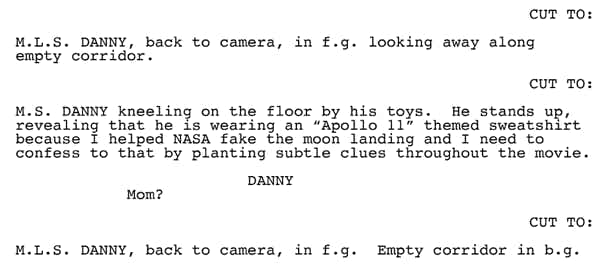
My analysis will adhere to the text . . .
waaaaaait a minute!
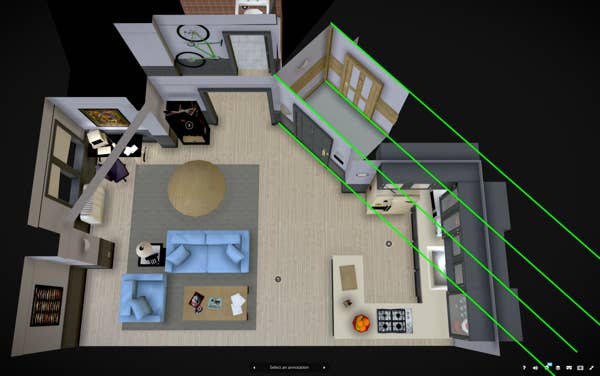
Ever since I graduated from film school I knew that I would some day write an essay that references Kubrick and Seinfeld.
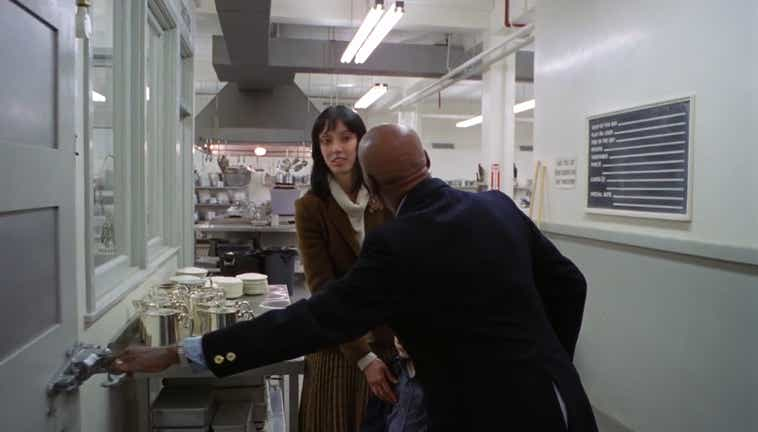
The door is hinged on the left side, as it is seen from the outside.
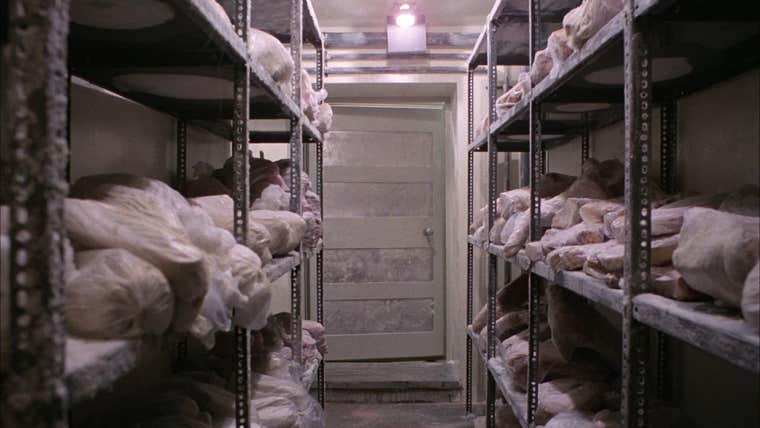
The very next shot and the door is hinged on the right side, as seen from the outside.
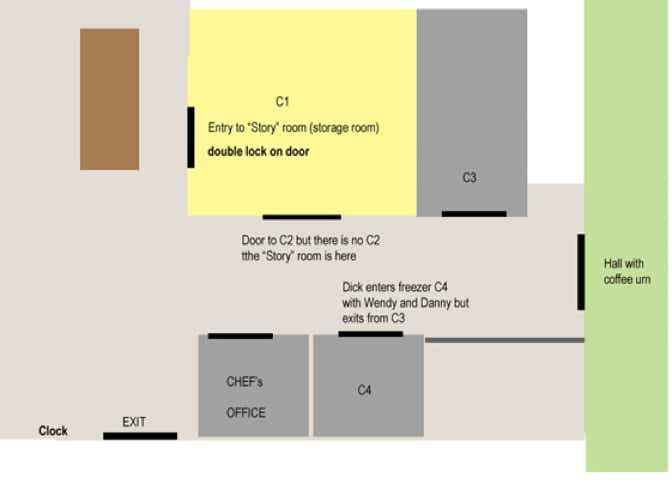
Another helpful map from Juli Kearns shows us that the door doesn’t change. The shots are in two different locations.
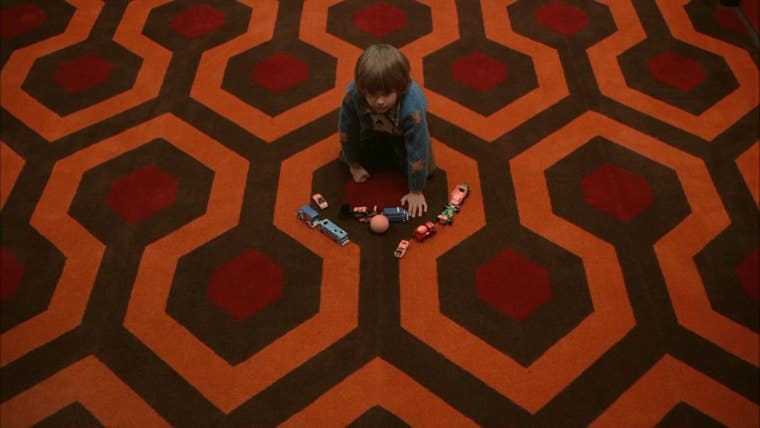
In this shot, most likely a pick-up, the pattern on the carpet is oriented so that the “opening” of the hexagon is in front of Danny.
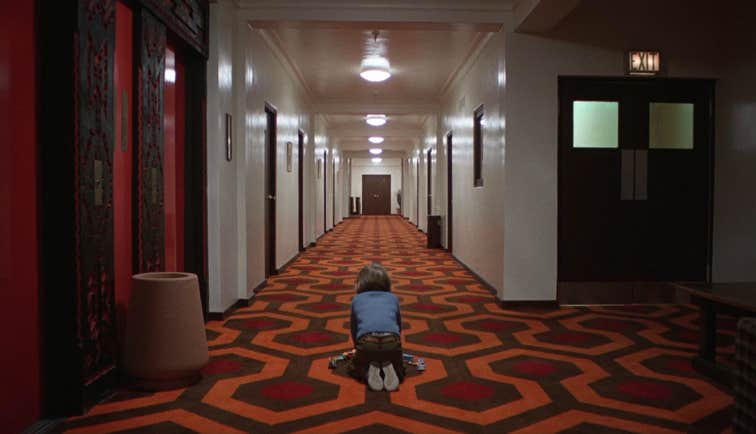
The very next shot. The carpet has rotated so that the “opening” is behind Danny. Note that the pot on Danny’s left has appeared out of thin air.
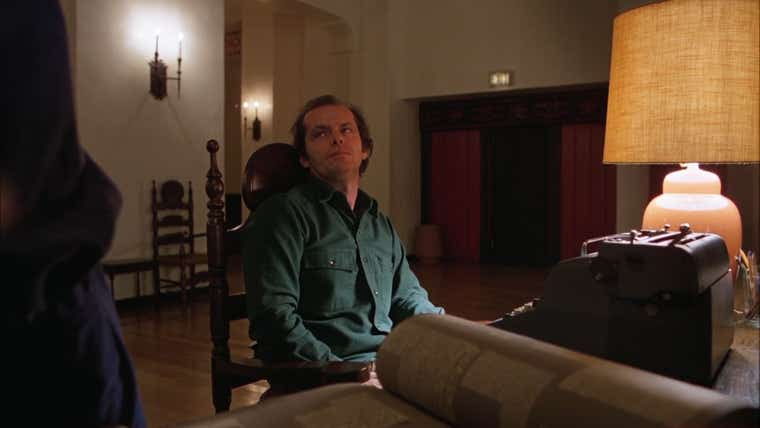
There is a chair and table behind Jack.
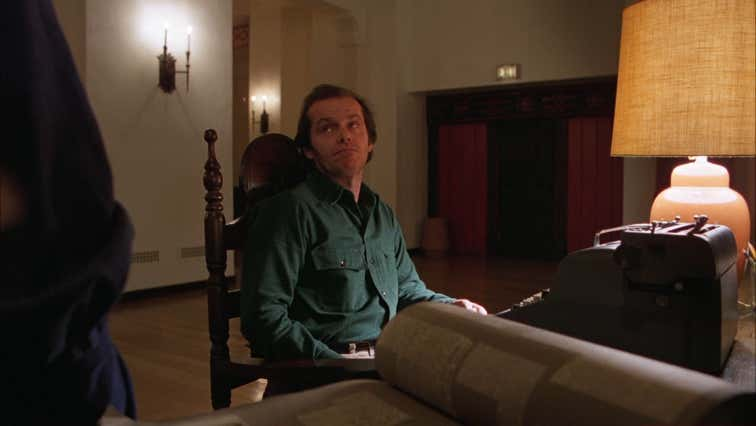
Same camera set-up after a cut-away to Wendy and the chair and table are gone. Perhaps the ghosts of the Overlook were safety conscious and didn’t want the heating vents blocked.
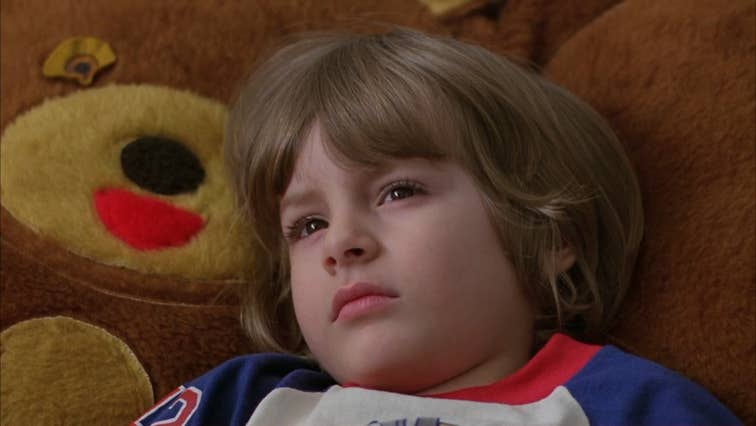
A bear in Danny’s Boulder bedroom. Does it tie into other bear imagery?
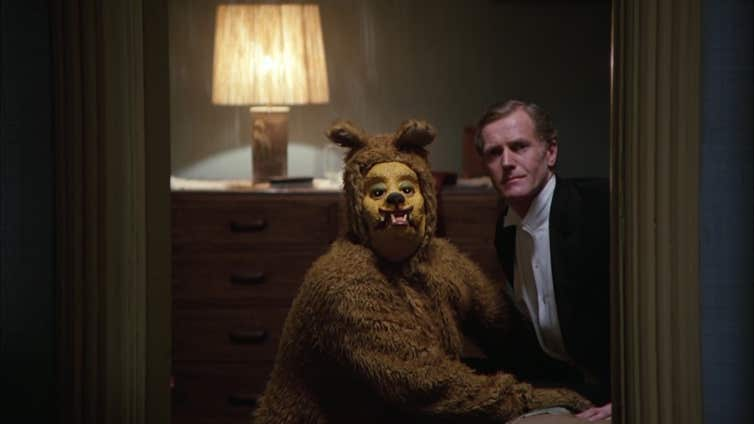
A man in a bear (?) costume in a sexual encounter with another man.
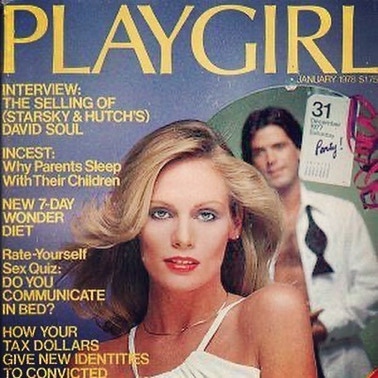
Presumably, Kubrick was not sending a secret message about Starsky and Hutch.
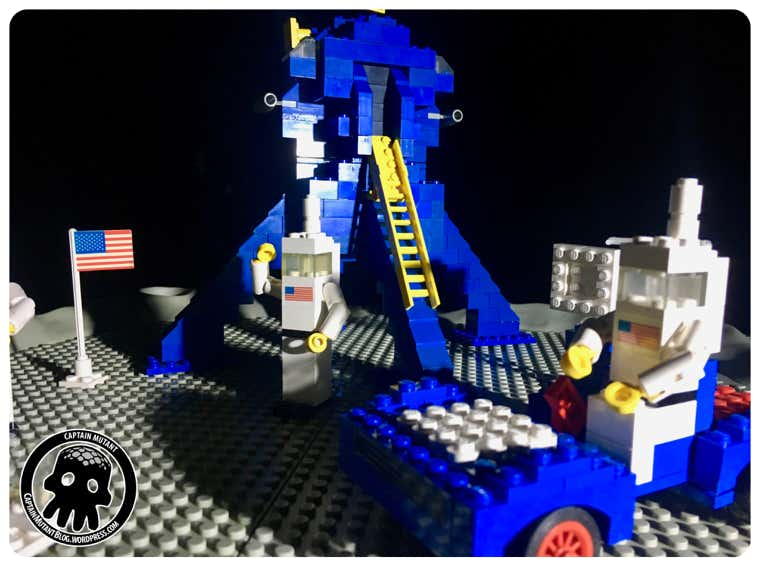
The headless astronauts were creepier than anything in The Shining. Thanks to Fire Star Toys for keeping these images archived.
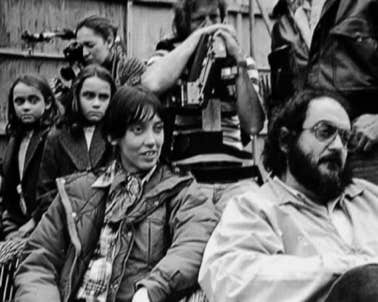
“I’m subverting the patriarchy, bitch!”
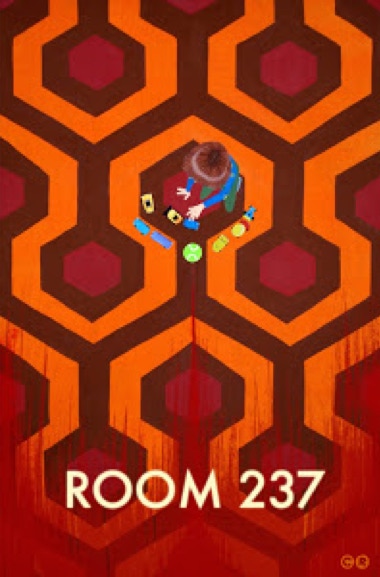
Thanks for nothing, Rodney Ascher.
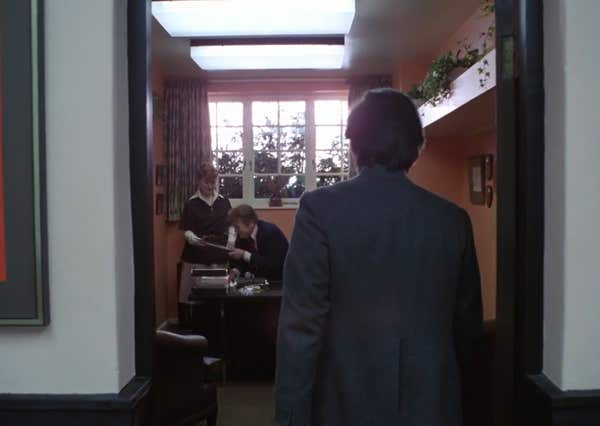
Ullman’s office is in the interior of the building.
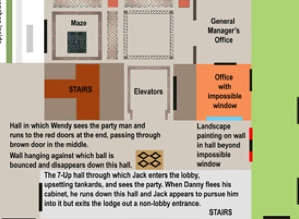
Detail of a map of the lobby of the Overlook Hotel by artist Juli Kearns shows the location of the impossible window.


